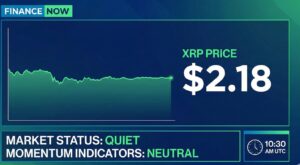Blockchain technology has transformed numerous industries and completely changed how we view established processes. A leading blockchain platform, Ethereum, has been at the forefront of this change. However, the Ethereum network has struggled with issues like interoperability and scalability. In this case, the Polygon Bridge was created as a critical solution. This article will highlight key aspects of the Polygon Bridge and how it works.
What Is The Polygon Bridge?
The Polygon (MATIC) blockchain is among the top Ethereum Layer 2 solutions. It provides scalable frameworks for platforms that can run on Ethereum, which requires interoperability. In order to address this, the network introduced a bridging tool.
Polygon Bridge enables users to move assets between several Blockchain networks. It is an essential part of the Polygon ecosystem, a layer-2 scaling solution built on top of the Ethereum network. Polygon Bridge allows Ethereum to communicate with other Blockchain networks like Binance Smart Chain, Avalanche, and others.
Token transfers are made simple using blockchain bridges. These bridges have trustless intelligent contracts that power the cross-chain functionality. Thus, it enables users to securely transfer their ERC tokens, including non-fungible tickets (NFTs).
Currently, Polygon offers two bridge options: a Plasma Bridge and a Proof-of-Stake (PoS) Bridge. There are benefits to both MATIC bridges. For instance, the PoS Bridge will allow you to withdraw money instantly, whereas Plasma will give you more security.
How Do Polygon Bridges Operate?
In order to be effective and decentralized, Polygon Bridge uses a dual consensus mechanism. It uses an architecture that allows arbitrary state transitions on its side chains. In addition, it guarantees that the bridge is workable with Ethereum Virtual Machine (EVM), which is used to carry out smart contracts on the blockchain.
Basically, the bridging mechanism operates while maintaining the same amount of assets in circulation. So when your assets are locked on Ethereum, an equal number of 1:1 pegged tokens are minted on Polygon when you transfer your assets from Ethereum to the MATIC network.
Similarly, when you move the assets from Polygon back to Ethereum, it burns the pegged tokens and unlocks them on Ethereum.
The two different MATIC bridge types have various security methods. A proof-of-stake mechanism works by the PoS Bridge, which is dependent on outside validators. However, the Ethereum blockchain’s security is fully dependent on Plasma.
Comparing Polygon Bridge to conventional Blockchain networks reveals various benefits. These include decentralization, faster and more affordable transactions, and cross-chain liquidity. Also, Polygon Bridge has numerous applications, especially in the DeFi industry, NFTs, and gaming.
Takeaways
For platforms that use Ethereum, Polygon provides an impressively scalable infrastructure. It is a practical and affordable choice for transferring your assets because of its cross-chain bridging technology. Users have two bridging options on the network: Plasma and PoS. Although highly rigid, Plasma Bridge is renowned for its strong security. The PoS Bridge, however, enables better adaptability, efficiency, and quicker withdrawals.




























